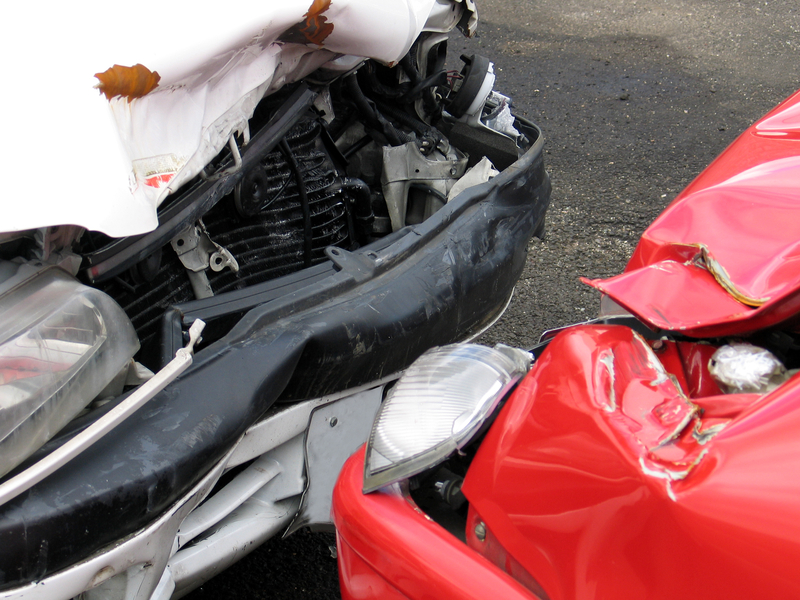Avoiding car accidents starts with understanding them. In addition to their tendency to cause fatalities and serious injuries, the four main kinds of car accidents have another factor in common: they can be avoided with safer driving habits.
Studies show that most car accidents happen because drivers aren’t paying enough attention to driving. Carelessness and overconfidence can cause accidents just as easily as road hazards. Other factors that frequently contribute to accidents include fatigue, speeding, recklessness, distraction, environmental conditions, medical impairment, and intoxication.
Keep reading to understand how the four most common types of car accidents can be avoided.
Rear-end collisions
Frequently resulting in whiplash (or worse) injuries for both drivers, rear-end collisions are the most common type of car accidents. While rear-end collisions are often caused by the car in front unexpectedly decelerating, tailgating vehicles can just as easily be the cause of the accident.
Tips for avoiding a rear-end collision, according to Today’s Collision.
- The best way to avoid a rear-end collision is leaving more space between you and the car in front of you. The more space, the more time you have to react to sudden braking and the more space you have to stop.
- Check your mirrors often, ideally every 6 seconds or so, as well as every time you stop or brake.
- Focus on driving
- Brake slowly.
- Make sure your brake lights work.
- Pay attention to the driving conditions.
- Keep your view clear.
Side-impact collisions
Sometimes referred to as a “T-bone” crash, side-impact collisions happen when one car impacts the side of another vehicle. Side-impact collisions are frequently caused by one driver failing to stop when another vehicle has the right of way. Levels of damage can range from scratched bumpers to completely imploded car doors, depending on how fast the offending car was driving. Side-impact collisions are especially dangerous because the sides of vehicles have less space to absorb energy and shield passengers, according to Allstate.
Tips for avoiding a side-impact collision.
- Follow the rules of the road
- Look both ways for oncoming cars even when you have the right of way
- Make sure to stop at red lights and stop signs.
- Follow posted speed limits to make sure that you will have adequate time to stop for a changing light, according to Allstate.
Head-on collisions
Head-on collisions tend to be the most deadly type of car accidents, according to AARP. Usually happening at high speeds, frontal-impact accidents occur when the front-end of the car hits another object, such as another vehicle, animal, tree, or other obstruction or obstacle on the road. The probability of head-on collisions increases any time there are additional road hazards such as snow, rain, ice or fog, Head-on collisions often result in devastating injuries such as internal damage, concussions, and dislocations. Most head-on crashes result from a driver falling asleep, being distracted, traveling too fast in a curve, speeding, or driving under the influence of drugs or alcohol, according to AARP.
Tips for avoiding a head-on collision
- Drive only when you are alert and sober.
- Use your seat belt.
- Avoid, whenever possible, driving in challenging weather or road conditions.
- Scan the road ahead for hazards. Anticipate where problems might occur.
- Stay well centered in your lane. This helps you avoid oncoming cars that might stray into your lane, and also allows you to move to the shoulder or side of the road more quickly if needed. On multilane roads, the right lane is the safest.
- Obey speed limits. A proper speed gives you more time to react, and decreases the risk of serious damages and injuries.
- If an oncoming vehicle veers into your lane for any reason, slow down immediately and blow your horn. Be prepared to drive off the road or stop, according to
Multi-vehicle collisions
Sometimes called pile-ups, multi-vehicle collisions involve at least three vehicles, and often occur on highways. Because vehicles can collide with one another multiple times and at several angles, these collisions are often disastrous, with injuries ranging from whiplash to paralysis and even death.
Tips for avoiding a multi-vehicle collision
- Avoid speeding.
- Slow down if roads become slippery.
- Never tailgate, especially in slippery conditions.
- Remember that trucks and SUVs take longer to stop.
- Replace worn tires.
- Never take your eyes off the road.
- Avoid distractions.
Unfortunately, even if you know how to avoid causing accidents, you could still be at risk of becoming injured because of someone else’s negligence. Were you injured in a car accident in Albuquerque? Brian K Branch can help you get the compensation you deserve. Call 505-207-4401 or contact us online!
Law Office of Brian K Branch, PC
715 Marquette Ave. NW
Albuquerque, New Mexico 87102
Tel: 505-207-4401




